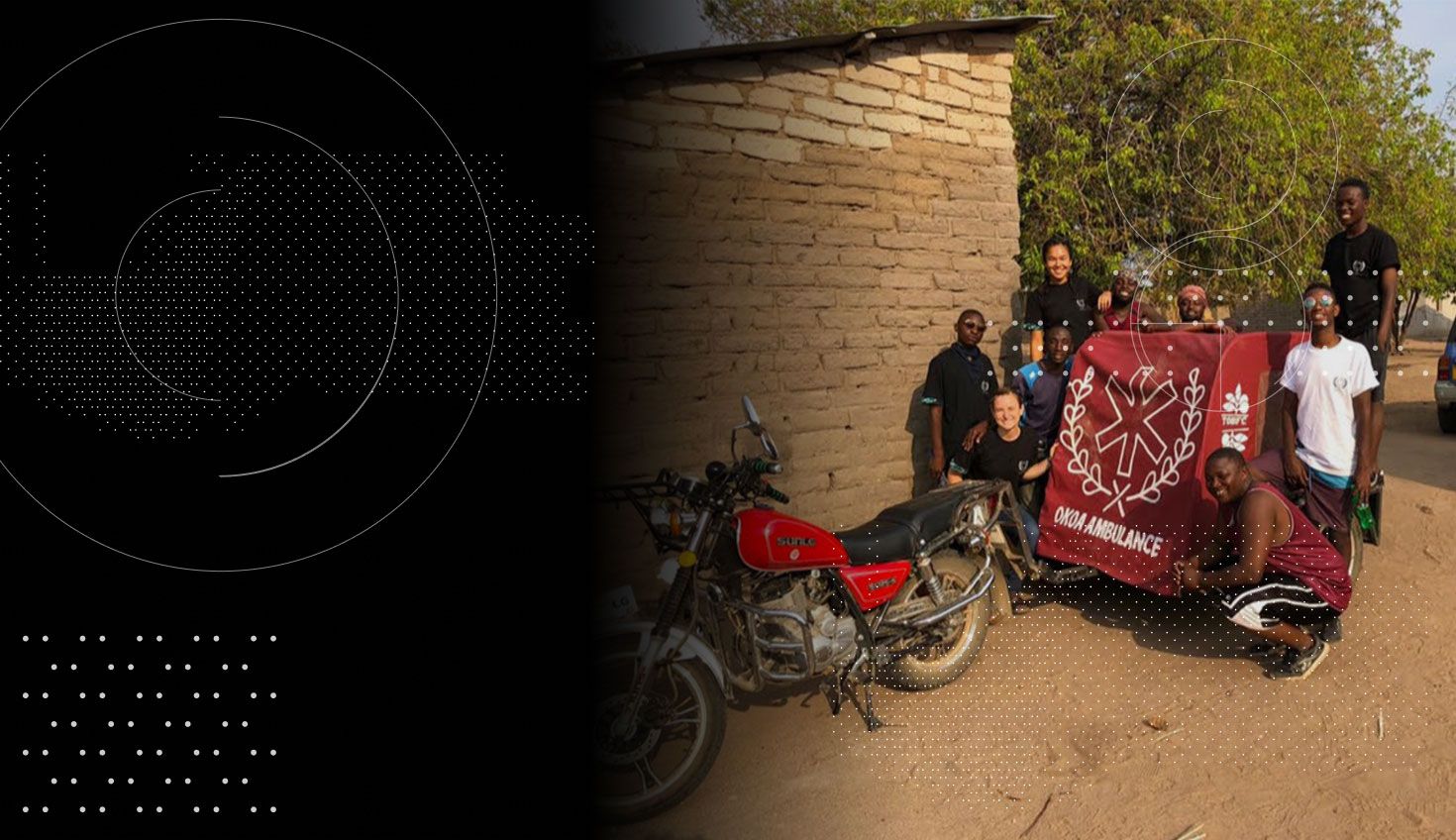
4:48
Over 1 billion people worldwide lack access to adequate healthcare because clinics are too far from their homes and safe transportation is not readily available. Traditional ambulances are too expensive and often cannot access rural communities due to difficult road conditions. In the best case scenario, patients must survive long, painful journeys to clinics on the back of a motorcycle with only the driver to help them with any health complications. Given these realities, many people in developing countries choose not to go to the hospital at all.
For the past two years, The Okoa Project has worked together with Tanzanian innovators, community members and a local grassroots NGO to create a low-cost ambulance trailer that can attach to the back of any motorcycle. This work began in a MIT D-Lab design course where a group of engineering students were partnered with the nonprofit Olive Branch for Children to address the lack of adequate medical transportation in remote communities. We have traveled to Tanzania three times while full-time students to conduct over 240+ interviews with various stakeholders, collect user feedback, and build and test five iterations of our ambulance design in Boston and Tanzania.
The Okoa Project’s ambulance trailer can be towed by any motorcycle and can navigate narrow, rough terrain inaccessible by cars and trucks.
As we progressed through multiple iterations, we narrowed in on a design that prioritizes user safety and comfort by determining what matters most when traveling to rural medical care facilities. In our interviews, we learned how stressful it can be for both the patient and motorcycle driver when no one else is accompanying them, leaving drivers to care for the patient on their own. Addressing this, we added space for another passenger to sit alongside the patient during the ride for emotional support and to help with physical care if necessary. We also discovered that roadside pregnancies are not uncommon in Tanzania, but drivers and bystanders rarely have the correct medical supplies to help. So we included a first aid and birthing kit.
Most troubling, women told us about the danger of causing stillborn deaths from vibrations and bumps during the journey to the hospital, so we developed a robust suspension system from motorcycle suspension parts to provide a safer and more comfortable ride.
Once an MIT student project, we have now evolved into a nonprofit organization dedicated to increasing access to healthcare for rural communities. By integrating local knowledge and understanding where past solutions have failed, the Okoa ambulance has been designed to navigate narrow and rough terrain that many vehicles cannot handle. Unlike other solutions, it can be integrated into existing systems because of its removable trailer with a versatile interior that can be locally maintained.
As we continue to iterate on our design and expand our team, we are also partnering with universities to create experiential learning and collaborative design opportunities for students and youth. These partnerships currently include the MIT D-Lab, the Kubuni Innovation Centre, and Mbeya University of Science and Technology in Tanzania.
Why The Okoa Project Designs in Onshape
Because our mission includes working with more students around the world, we want to ensure our work can be instantly accessed by anyone who needs it. Onshape allows our partners to access our designs and collaborate with us on any computer, phone or tablet. For students and those from lower income backgrounds, this eliminates the barrier of having to invest in high-performance workstations and lets us focus on what really matters. We want to have people from all backgrounds join us in our mission to provide life-saving transportation and don’t want software to stand in the way.
For day-to-day tasks, Onshape helps us to share real-time information between our teams in the United States and Tanzania. This will be especially important as we grow further and make new design improvements. We hope that our ambulance trailers can be soon implemented in multiple locations across Tanzania and East Africa, serving as an example of how other rural communities can dramatically improve their healthcare access, too.
Lastly, Onshape simplifies our data management, reducing the number of headaches in keeping track of the multiple CAD versions that exist between team members. There is never any confusion over which version is the latest version of our design.
From the very beginning, we have found Google Drive to be essential to our operation and discovered the value being able to work simultaneously online. We have previously used other CAD systems, but found none that give us the same capabilities as Onshape. Not to mention that it’s an easy-to-learn platform.
Hospital Access for All
The Okoa team is now in Mbeya, a city of 270,000 in southwest Tanzania near the Zambia border, ready to deploy our first pilot test. We will be launching two ambulances in four villages to serve a population of 5000 in partnership with the Olive Branch for Children. The goal of the pilot test is to improve the current transportation system that connects injured citizens with motorcycle drivers and medical care facilities. We hope to prove the safety and effectiveness of these ambulances to local government officials, permitting us to build and deploy more in the region.
When I first became involved in this project, I was an engineering student excited to apply my technical knowledge from my courses to help solve a real-world problem. Following my initial trips to Tanzania, however, the millions of people who struggle to access their nearest hospital became real names, faces and stories to me – not just statistics. I’ve grown close to these communities and am continuously motivated to work with our Okoa team to develop a solution that can make a difference and allow people to get the care they need and deserve.
Latest Content

- Case Study
- Consumer Products
BOA Technology: Redefining Outdoor Fit Equipment with Cloud-Native Onshape
11.03.2025 learn more
- Blog
- Aviation, Aerospace & Defense
- Branching & Merging
- Custom Features
- Learning Center
- Onshape Government
Why Aerospace & Defense Teams Choose Onshape for Product Development
12.18.2025 learn more
- Blog
- Evaluating Onshape
Cloud-Native CAD 2025 Wins: Revenue Growth, Real-Time Collaboration, Unified CAD-CAM
12.17.2025 learn more
- Blog
- Becoming an Expert
- Assemblies
- Simulation
Mastering Kinematics: A Deeper Dive into Onshape Assemblies, Mates, and Simulation
12.11.2025 learn more



